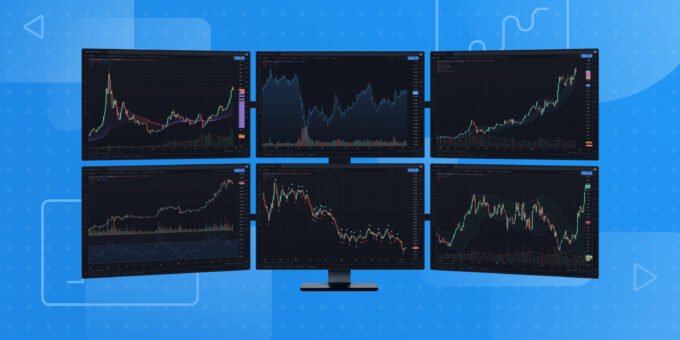Can you buy multiple properties with a 1031 exchange? Most people aren’t aware that the 1031 exchange can aid them in purchasing various properties. You can even buy up to three properties with a 1031 exchange. However, if you still want to acquire more properties, you’d have to abide by the 200% and the 95% rules.
The 200% rule allows you to acquire more than three properties in 1031 exchange when the combined value of the newly acquired properties doesn’t exceed 200% of the property sold.
On the other hand, the 95% rule allows you to buy multiple properties provided you acquire them at 95% of their declared value within the exchange period.
Also, you can buy multiple properties with a 1031 exchange, provided you adhere to the rules and follow the stipulated procedures. If you’re interested in that option, consider visiting this link https://www.buynnnproperties.com/1031-exchange-one-property-for-two/ to learn more.
If you’ve been asking, “can you buy multiple properties with a 1031 exchange?” This article answers the question and more.
1031 Exchange in Real Estate Explained
You’re probably wondering, “what is a 1031 exchange in real estate?” The 1031 exchange, which originates from Section 1031 of the US Internal Revenue Code (IRC), allows business or investment property owners to defer federal taxes on some real estate exchanges.
The 1031 exchange is a like-kind swap of an investment property for another while still deferring capital gains. In other words, the 1031 exchange allows you to defer capital losses or capital gain taxes that you’d have otherwise had to pay at the time of sale.
What Are 1031 Exchange Requirements and Rules?
Below, we’ll look at the fundamental requirements, together with the rules and regulations binding the 1031 exchange.
- The property to be replaced must be of the kind, same or greater value than the relinquished property. It must qualify to be like-kind because properties of only the same nature are exchanged. For example, a fully furnished rental house is considered like-kind to bare empty land. Note that properties in the United States aren’t like-kind to properties outside the country.
- Properties exchanged must have the same function and be of the exact nature. This emphasizes that the two properties, having qualified to be of the same kind, must also have similar functions. For example, a family house can’t be exchanged for a vacation house.
- You’re not obliged to be in possession of the money made from the sale at any time. All funds are kept in an escrow with a qualified intermediary, lest the proceeds become taxable.
- Section 1031 doesn’t apply to trust certificates, bonds, stocks, partnerships, and other securities.
What Happens When You Sell 1031 Exchange Properties?

When completing a 1031 exchange, the proceeds you get should be able to cover the cost of the newly acquired property.
How Does a 1031 Exchange Work?
You can defer capital gains tax by selling the property and putting the property gains towards acquiring the property of similar value and function.
If there’s no gain from the sales, there won’t be any income tax charged. The following steps below will act as guidelines on how a 1031 exchange works.
- Step 1
Identify the properties you intend to buy and sell and ensure that they have the same kind, value, and function.
- Step 2
Choose a qualified Intermediary. Intermediaries are also called exchange facilitators. An Intermediary has to hold your fund in escrow until you complete the exchange. Be sure to choose an experienced Intermediary so you don’t lose money or miss important deadlines.
- Step 3
You’ll need to inform the Internal Revenue Service (IRS) of your intention concerning the 1031 exchange. The IRS has already gotten the information through the form that you’ll receive. In that document, you’ll have to fill in the property details, the intermediary, and the amount involved.
When Do You Need a 1031 Exchange?
There are a plethora of reasons to consider the 1031 exchange. You may want to:
- Sell your current property and invest in more than one property. 1031 exchange offers opportunities to exchange your sold property for multiple properties. There’s no limit once you follow the rules.
- Invest in another property that has a higher return than your current property.
- Reestablish the property’s depreciation.
Types of 1031 Exchange
There are three types of 1031 exchange, and they’re:
-
Reverse Exchange
A reverse exchange is when you acquired the replacement property before selling the relinquished property. However, ensure the Qualified Intermediary holds the property.
Unlike other forms of 1031 exchange, the reverse exchange allows you to purchase replacement property even before selling the relinquished property. After this, you have to sign an accommodation agreement.
-
Delayed Exchange
The delayed exchange is the most popular type of 1031 exchange. It’s a common exchange format as it confers the freedom to purchase replacement property for a maximum duration of up to 180 days.
Most significantly, in a delayed exchange, the sales go to the Qualified Intermediary only when you sell the property relinquished before purchasing the replacement property.
The Qualified Intermediary keeps count of the money until you acquire the replacement property; only then will they deliver the funds to the specified closing agent.
-
Built-to-Suit Exchange
This exchange allows replacement property to be renovated and the improvements completed within 180 days, meaning that you must complete all constructions by the time you finalize the transaction.
Conclusion
There you have it! The answer to “Can you buy multiple properties with a 1031 exchange?” is yes, as long as they meet all the requirements of a 1031 exchange.
This venture can be an extremely beneficial way to grow your real estate portfolio without paying capital gains taxes on your property sale. The fact that you can exchange one property for up to three more properties makes it more beneficial for savvy investors interested in switching up their investment portfolio. However, pay attention to the 1031 exchange time limit to ensure you don’t get into trouble and end up paying tax for the relinquished property.
As always, it’s important to consult with a tax professional before making any significant decisions regarding your finances. Hopefully, this article provides some helpful information.
Have you ever used a 1031 exchange to purchase multiple properties? Let us know in the comments!














Leave a comment